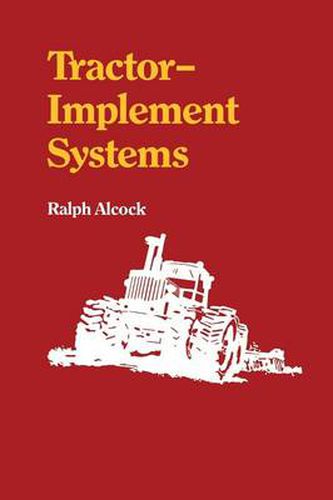Readings Newsletter
Become a Readings Member to make your shopping experience even easier.
Sign in or sign up for free!
You’re not far away from qualifying for FREE standard shipping within Australia
You’ve qualified for FREE standard shipping within Australia
The cart is loading…






This title is printed to order. This book may have been self-published. If so, we cannot guarantee the quality of the content. In the main most books will have gone through the editing process however some may not. We therefore suggest that you be aware of this before ordering this book. If in doubt check either the author or publisher’s details as we are unable to accept any returns unless they are faulty. Please contact us if you have any questions.
Agriculture has benefited considerably from the wide-scale use of tractors and associated implements. Tractors have developed along two, at times contradictory, design paths. The first of these has resulted in functional improvements to the vehicle, making it capable of im proved performance in the often harsh environmental conditions in which it is required to operate. For example, agricultural tires have improved the versatility of tractors by allowing them to operate at relatively high speeds on a variety of terrains, and hydraulics have provided for flexibility in controlling and operating implements. It can also be seen that these particular functional design improvements have contributed significantly to the second design pathway, that of ergon omics, and the human-machine interface. Recent stress on the working environment for the tractor operator has led to design improvements relative to tractor cabs, the placement and labeling of controls, etc. This text discusses those factors relevant to the design, selection, and operation of tractor-implement systems. The audience for which it is intended is undergraduate and graduate students of agricultural engineering studying power and machinery. However, the text is suf ficiently applied to have relevance for those extension personnel in volved with advising farmers on the selection and operation of tractor implement combinations. The tractor cannot be regarded in isolation from the implement, nor from the environment in which both the tractor and implement are ix x Preface working.
$9.00 standard shipping within Australia
FREE standard shipping within Australia for orders over $100.00
Express & International shipping calculated at checkout
This title is printed to order. This book may have been self-published. If so, we cannot guarantee the quality of the content. In the main most books will have gone through the editing process however some may not. We therefore suggest that you be aware of this before ordering this book. If in doubt check either the author or publisher’s details as we are unable to accept any returns unless they are faulty. Please contact us if you have any questions.
Agriculture has benefited considerably from the wide-scale use of tractors and associated implements. Tractors have developed along two, at times contradictory, design paths. The first of these has resulted in functional improvements to the vehicle, making it capable of im proved performance in the often harsh environmental conditions in which it is required to operate. For example, agricultural tires have improved the versatility of tractors by allowing them to operate at relatively high speeds on a variety of terrains, and hydraulics have provided for flexibility in controlling and operating implements. It can also be seen that these particular functional design improvements have contributed significantly to the second design pathway, that of ergon omics, and the human-machine interface. Recent stress on the working environment for the tractor operator has led to design improvements relative to tractor cabs, the placement and labeling of controls, etc. This text discusses those factors relevant to the design, selection, and operation of tractor-implement systems. The audience for which it is intended is undergraduate and graduate students of agricultural engineering studying power and machinery. However, the text is suf ficiently applied to have relevance for those extension personnel in volved with advising farmers on the selection and operation of tractor implement combinations. The tractor cannot be regarded in isolation from the implement, nor from the environment in which both the tractor and implement are ix x Preface working.